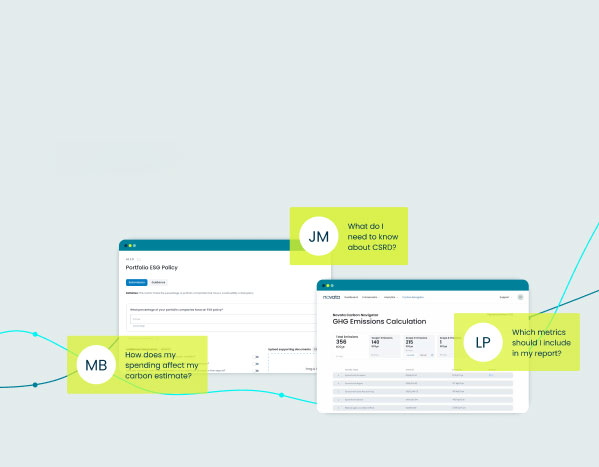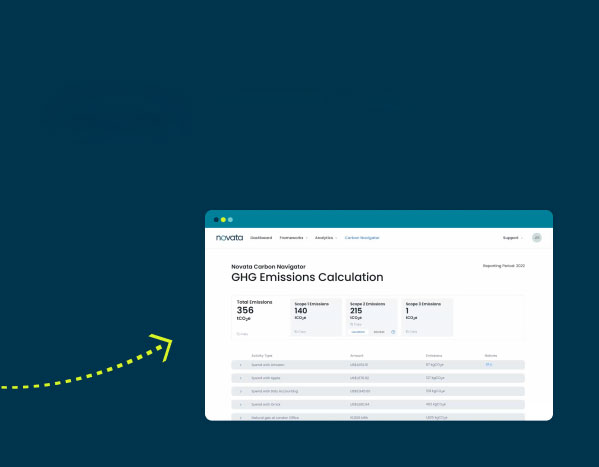According to a 2021 EY study, 72% of private equity executives said they expected an ESG premium in companies they were considering exiting. Across the investment lifecycle, environmental, social, and governance (ESG) data provides insights that help investors assess risks and value-creation opportunities for portfolio companies. During the ownership or post-investment phase, in particular, insights from ESG data inform how general partners (GPs) engage with portfolio companies to mitigate operational and reputational risks, drive bottom-line growth, and improve valuation upon exit.
Collecting high-quality ESG data from portfolio companies is the first step to understanding their performance on topics material to the business and the firm. However, to gather actionable opportunities, GPs must understand how to interpret ESG data to gain insights that drive long-term value. This is where having the right context is key.
When analyzing ESG data, one way to contextualize performance is through benchmarking. Benchmarks provide a standard against which company or portfolio performance can be measured. For portfolio companies, GPs can use benchmarking to compare performance to their peers. Additionally, reviewing the portfolio’s data set against set criteria at the individual company, portfolio, and industry levels can give further context for performance.
- Company level: Review company performance against metrics that are material to the company’s bottom line.
- Portfolio level: Analyze performance against your firm’s priorities and within your portfolio to understand how comparable companies weigh against each other.
- Industry level: Measure performance against external benchmarks for insight into how the portfolio compares to similar companies in their industry.
The Benefits of Contextualizing Data
Analyzing ESG data with the right context is essential for GPs to identify actions needed to improve financial performance. Here are three areas where data contextualization can improve decision-making:
Understanding “good” and “bad” performance
“Good” and “bad” performance is both objective and subjective. Objectively, a company can perform well if it has 80% of the policies a GP requires. However, if the company doesn’t have policies that are most material to its business and commonly used by peers, this would impact how the investor interprets performance. Subjectively, adding the contextualization of benchmarking demonstrates where “bad” performance may be hiding. Normalizing and comparing performance with benchmarks will show how portfolio companies performed compared to their peers.
Identifying outliers
As GPs better understand performance, it becomes easier to identify outliers. Outliers are portfolio companies whose performance skews heavily in a positive or negative direction. Negative outliers may indicate that a particular company or group of companies requires support to remain aligned with the firm’s portfolio-wide ESG goals. Positive outliers, on the other hand, typically outperform their peers on one or more metrics. For example, the data set may indicate that one company is performing particularly well in a certain ESG metric, e.g., the percentage of renewable energy used. In this case, the positive outlier can serve as a model for other portfolio companies. Depending on your engagement strategy, there could be an opportunity to get portfolio companies together to share best practices on specific topics.
Tracking progress over time
Data analysis will reveal areas where investors need to prioritize actions for improvement and closely track progress in the next reporting cycle. Year-over-year data provides helpful context to better understand what the company has done in previous years, and where its future trajectory may go. For example, if a company sets a net-zero target, having annual data on its carbon emissions demonstrates the progress they have made toward this goal and if they are on track to achieve the target. In the long term, demonstrating progress in reporting will be crucial to both the firm and the portfolio company and a key part of their sustainability story for external stakeholders, such as LPs.
As LP demand for ESG data continues to grow, GPs will need to be able to showcase how they are driving change on topics that matter to stakeholders. The ability to analyze and contextualize data is central to this process. Data management tools, such as Novata, can help streamline processes with intuitive tools to collect, analyze, benchmark, and report on the metrics that matter.
To learn more about contextualizing and analyzing ESG data, download Novata’s eBook From Collection to Action: A GP’s Guide to Creating Value with ESG Data.






